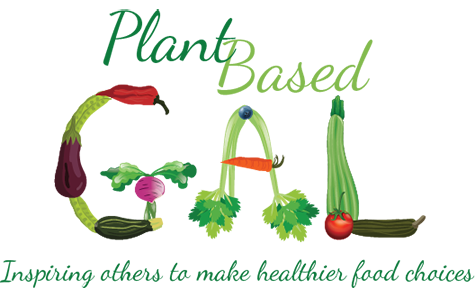 Reading food labels is an important part of eating a whole food plant-based diet. You can discover a lot about exactly what you are putting into your body and make an educated decision on whether or not to consume certain foods. If you are serious about adopting this lifestyle, then it is a must to learn to read labels and to do it consistently.
Reading food labels is an important part of eating a whole food plant-based diet. You can discover a lot about exactly what you are putting into your body and make an educated decision on whether or not to consume certain foods. If you are serious about adopting this lifestyle, then it is a must to learn to read labels and to do it consistently.
Let’s start by looking at the label on a can of salt-free pinto beans.
SERVING SIZE
To read the Nutrition Facts on a food label, start at the top with the number of servings per container. This is always good to note, because sometimes a small package or bottle can hold more servings than you think. A good example are some fruit smoothie drinks where it’s quite easy to drink one whole bottle. But then, when you read the label. . . . you find there were supposed to be two servings in that bottle you just gulped down. 😲
TOTAL FAT
The next section talks about the fat content; Total Fat, Saturated Fat, and Trans Fat. It is suggested that you keep your total consumption of fats to less than 30 grams per day and steer clear of Trans Fat which is the worst type of dietary fat. Health experts recommend that you keep your intake of saturated fat, trans fat and cholesterol as low as possible as part of a nutritionally balanced diet.[1] And instead, get your healthy, Unsaturated Fat from plant-based sources (olives, nuts, seeds).
CHOLESTEROL
Moving further down the label, you come to cholesterol. This one is easy if you’re eating plant-based because there is no cholesterol in plants! So, if you see any number besides zero – put it back on the shelf! 😉
SODIUM
Sodium is another essential ingredient for maintaining balance in your body. But, having too much sodium in your diet is not a good thing. The American Heart Association recommends we keep our salt/sodium intake to less than 1500 milligrams per day.[2] So, keep an eye on this number on the label.
TOTAL CARBOHYDRATE
FIBER: Make it your goal to find foods that are less-processed and that are higher in fiber. Shoot for 40 or more grams of fiber each day.
SUGAR: The listing for sugar will include added sugars as well as those which occur in the food naturally (ie: fruit). As a general rule, try to pick foods with 6 or less grams per serving.
PROTEIN
The average sedentary person only needs 56 grams of protein each day, so checking the protein listing will help you see if you’re getting the proper amount. For more information on protein intake read my article on protein.
DAILY VALUES (DV)
This column tells you how the nutrients in one serving of the food item contribute to your total daily intake. Daily Values are based on a 2,000-calorie diet.
INGREDIENTS
The ingredients are always noted in order by amount. The largest amount of a particular item will be shown first, the smallest amount at the end of the listing. Scanning this section can be the most important part of label reading for a plant-based, oil-free diet. Be on the look-out for animal products or hidden sugar/simple carbs.
Look for hidden added sugar by watching for words that end in “ose” such as high-fructose corn syrup, maltose, dextrose, sucrose, as well as other forms of sugar such as honey, evaporated cane juice, and fruit juice concentrate.
Cow’s milk shows up in the form of whey, casein or caseinates, milk solids, curd, ghee, rennet, and lactose.
TO SUM THINGS UP
Making it a habit to take a peek at food labels in the grocery store is a good habit to have! You can learn a lot in just a few seconds and keep on track for eating a more healthy diet.
[1] The American Heart Association’s Diet and Lifestyle Recommendations
http://www.heart.org/HEARTORG/HealthyLiving/Diet-and-Lifestyle-Recommendations_UCM_305855_Article.jsp#.W5Q09OhKiUm
[2] FDA – How to Understand and Use the Nutrition Facts Label
https://www.fda.gov/food/labelingnutrition/ucm274593.htm#overview




Very helpful article, Julie. I am reading labels all the time as I also don’t want dairy or other animal-based products in what I consider to be plant-based food. Amazing what some manufacturers try to hide in their products. I’m glad that they are forced to list all ingredients, although sometimes they are very creative in what they call the ingredients.
Thanks Marc, I’m glad you found the article helpful! One of the first things I learned when becoming plant-based is that “non-dairy” creamer for coffee really is not non-dairy at all! Interesting to me that they can even call it that when it has sodium caseinate (a milk protein) as one of the ingredients.